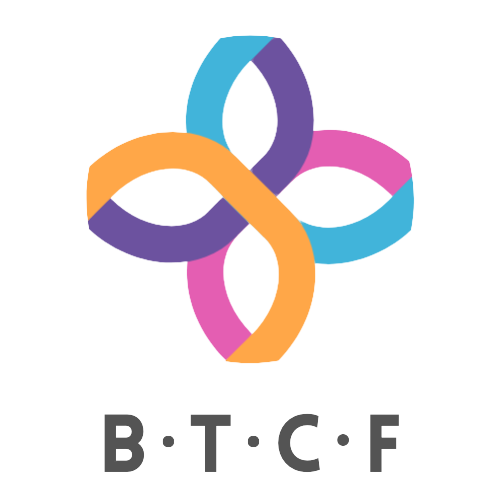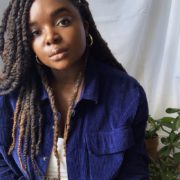AN INTERVIEW WITH PRISCILLA O. AGYEMAN
“You can’t pour from an empty vessel”-
I remind myself of this daily as a signal to prioritize self-care and rest.
If I’m not taking care of myself, how can I take care of others?
BTCF: Could you please share what Saddie Baddies is about? When did you launch it?
PRISCILLA: I started Saddie Baddies on March 8, 2019. It was an instinct for me at the time because I was sitting at my desk, at a job that I was really struggling to find fulfillment in at the time and I was craving an outlet for girls like me who had their own struggles with mental health but nowhere to unpack it. When I would talk about my anxiety, sometimes people wouldn’t understand where I was coming from, or would assume I was only talking about panic attacks (when in reality there’s so many different types and displays of anxiety). Saddie Baddies gently introduces research-based topics that so many of us (people of color) have been wanting to address by breaking it down into bite-sized pieces. The end goal is to initiate collective healing.
BTCF: How did you come up with the name Saddie Baddies and what does it mean?
PRISCILLA: So a “baddie” in popular terms is someone who is…easy on the eyes (ha!) A saddie baddie is someone who from the outside looks like they have everything going from them externally, but still faces their own mental and emotional struggles on a daily basis. I came up with the concept of saddie baddies because I realized people only assumed that you have to “look” a certain way in order to deal with mental health issues. That’s a huge misconception.
BTCF: You describe wanting mental health to be palatable. It’s such a creative way to hear it put that way. Can you please give us some examples and insight about this?
PRISCILLA: I use the term “palatable” because talking about mental health shouldn’t be such a taboo topic. We talk about music, fashion, politics, media, and celebrities like it’s nothing but so often when we ask the question “How are you feeling?” we lack the language to truly express how we feel. Or we lie and say “Everything’s great!” and deflect actually tapping into our emotions. I created a safe space Saddie Baddies of allowing my community to actually say how they feel, not just what they think is socially acceptable. We’re losing people to suicide, depression, PTSD and so many other mental health issues because for so long we’ve been ashamed to say “I’m not okay, and I need help.”
BTCF: In your work, you chat about how mental health is very stigmatized in the black community. Why do you think that is and in what areas would you like to see this change so that there are more opportunities for positive change?
PRISCILLA: Stigma comes from shame and shame comes from guilt. In the black community, we have historically been left out, abused, and ostracized by the medical community (there’s an excellent read on this called Medical Apartheid by Harriet Washington that goes into depth about this), so we have systemically been disconnected from healthcare for centuries. Psychiatry and psychology was designed for the majority of White, wealthy Americans. Black people did not even have adequate access to mental health services up until the last 1960s-1970s, if we’re being honest. So think about how much we’ve missed out on in terms of care? It’s unbelievable. And culturally, our only source of mental health “care” was through the church or religious services. Our pastors became our counselors, we would go to church on Sundays and cry and mourn and let out our emotions. However, the shame of going to an actual psychiatrist or therapist who could provide behavioral therapy and medication was highly stigmatized, and even discouraged. That’s where that shame came from.
BTCF: Your videos, website, social media accounts are very creative and inviting which visually embraces your mission, intention and goals. Did you study art or just super creative?! Where did you get your inspiration?
PRISCILLA: I’m a deep lover and student of all arts! In high school I was really into drawing and painting, and as an adult I think that’s evolved into more curating images that I find striking or writing as a form of self-expression. I go to museums (pre-coronoavirus!) to find inspiration and I’m inspired by so many views just living in New York.
BTCF: I really enjoyed your YouTube video Dealing with High Functioning Anxiety. Can you share a little bit about what is high functioning anxiety and how does it affect your life?
PRISCILLA: So high functioning anxiety is not an actual mental health diagnosis, but it’s the way mental health professionals describe a person who has all the symptoms of anxiety but is still able to “function” or perform their daily tasks relatively well although it’s still a burden. I identify with this because it wasn’t until I was in my early 20s I realized I had always shown symptoms of anxiety, but I didn’t know what it was called or have the language to properly describe it. But I would have anxiety attacks throughout college, and physiologically I had all the symptoms of anxiety- stomach problems, irritability, nervousness, trouble concentrating and sleeping, fast heartbeat. Going to therapy a few years ago finally helped me understand what anxiety is and how I can manage it better.
BTCF: What are some helpful ways that people in the black community can open up about their mental health and not feel it’s something to hide?
PRISCILLA: Talk about it! Journaling is an extremely therapeutic act, I’ve been journaling since I was in first grade (ha!) and it truly is a great way to release anything I’m trying to process. Look for a therapist (on saddiebaddies.com/resources we have a list of mental health tools) and make the effort to take care of yourself. Talk to your friends and loved ones who are able to listen and be there to support you. We have to be adamant about self-preservation, especially during this social climate when we’re seeing over and over again how society sees and treats Black people as if we’re disposable. We are not disposable, we matter, and we deserve peace.
BTCF: How do you manage your mindfulness in your everyday living? Do you have a top 5 you could share?
PRISCILLA: I would say my top 5 methods of mindfulness would include: meditating every day for at least 5-10 minutes, eating plant-based, making time for joy daily, practicing gratitude, and showing love to the people around me.
To learn more about Saddie Baddies, please visit www.saddiebaddies.com and follow them on @saddie_baddies on all their social!



